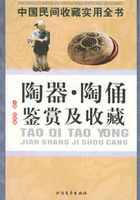The Manufacturing Power and the Agricultural InterestIf protective duties in favour of home manufactures proveddisadvantageous to the consumers of manufactured goods and servedonly to enrich the manufacturer, this disadvantage would especiallybe felt by the landed proprietor and the agriculturist, the mostnumerous and important class of those consumers.But it can beproved that even this class derives far greater advantages from theestablishment of manufactures, than the manufacturers themselvesdo; for by means of these manufactures a demand for greater varietyand for larger quantities of agricultural products is created, thevalue in exchange of these products is raised, the agriculturist isplaced in a position to utilise his land and his powers of labourmore profitably.Hence emanates an increase of rent, of profits,and wages; and the augmentation of rents and capital is followed byan increase in the selling value of land and in the wages oflabour.
The selling value of landed property is nothing else thancapitalised rent; it is dependent, on the one hand, on the amountand the value of the rent, but, on the other hand, and chiefly, onthe quantities of mental and material capital existing in thenation.
Every individual and social improvement, especially everyaugmentation of productive power in the nation, but, most of all,of the manufacturing power, raises the amount of rents, while atthe same time it lessens the proportion which rent bears to thegross produce.In an agricultural nation little developed andscantily peopled, e.g.in Poland, the proportion of rent amounts toone-half or one third the gross produce.in a well-developed,populous, and wealthy nation, e.g.England, it only amounts toone-fourth or one-fifth part of that produce.Nevertheless, theactual worth of this smaller proportion is disproportionatelygreater than the worth of that larger proportion-in money valueespecially, and still more in manufactured goods.For the fifthpart of twenty-five bushels (the average produce of wheat inEngland) equals five bushels; the third part, however, of ninebushels (the average produce of wheat in Poland) amounts only tothree bushels; further, these five bushels in England are worth onan average 25s.to 30s.; while these three bushels in the interiorof Poland are at the most worth 8s.to 9s.; and finally, goods inEngland are at least twice as cheap as in manufactured Poland:
consequently the English landed proprietor is able to buy for his30s.of money-rent ten yards of cloth, but the Polish landowner forhis 9s.of rent can obtain scarcely two yards, from which it isevident that the English landed proprietor by the fifth part of thegross produce is as rentier three times, and as consumer ofmanufactured goods five times, better off than the Polish landowneris by the third part of his gross produce.But that farmers andagricultural labourers also must in England (especially asconsumers of manufactured goods) be disproportionately better offthan in Poland, is shown by the fact that out of the produce oftwenty-five bushels in England twenty bushels go for sowing, forcultivation of the field, wages, and profits: half of which (or tenbushels) devoted to the last two items have an average value of60s.or twenty yards of cloth (at 3s.per yard), while from theproduce of nine bushels in Poland only six bushels go for sowing,cultivation of the field, profit, and wages, half of which, orthree bushels, devoted to the last two items, have merely a valueof 10s.to 12s.or three and a half yards of cloth.
Rent is a chief means of usefully employing material capital.
Its price.therefore, depends also on the quantity of the capitalexisting in the nation and the proportion of the supply of it tothe demand.By the surplus of the capital which accumulates in amanufacturing nation as the result of its home and foreigncommerce, by the low rate of interest which there exists, and thecircumstance that in a manufacturing and commercial nation a numberof individuals who have become wealthy are always seeking to investtheir surplus capital in land, the selling price of a given amountof rent of land is always disproportionately higher in such anation than in the mere agricultural nation.In Poland the rent ofland is sold at ten or twenty years' purchase; in England at thirtyor forty years' purchase.In the proportion in which the sellingvalue of the rent of land is higher in the manufacturing andcommercial nation than in the agricultural nation, so also is theselling value of the land itself higher in the former than in thelatter.For land of equal natural fertility in each country, thevalue is in England ten to twenty times higher than in Poland.
That manufactures have an influence on the amount of rent, andtherefore on the value in exchange of the land, is a fact whichAdam Smith certainly notices at the conclusion of the ninth chapterof his first book, but only incidentally and without bringing thevast importance of manufactures in this respect properly to light.
He there distinguishes those causes which influence directly theaugmentation of rent (such as the improvement of the land itself,the increase in the number and the value of the cattle maintainedupon it) from those causes which have only an indirect influence onthat augmentation, among which latter he classes manufactures.Inthis manner he places the main cause of the augmentation of therent and of the value of land (namely, the manufactures) in thebackground so that it is scarcely perceptible; while he places theimprovement of the land itself and the increase of cattle, whichare themselves for the most part the result of manufactures and ofthe commerce proceeding from them, as the chief cause, or at leastas an equal cause, of that augmentation.
Adam Smith and his followers have not recognised by any meansto its full extent the value of manufactures in this respect.















